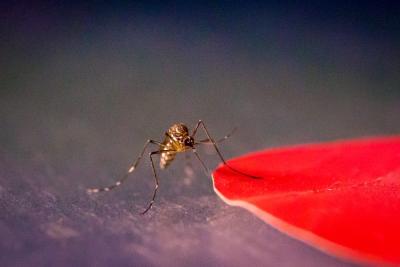
New research shows that Aedes aegypti mosquitoes are attracted to specific colors, including red. Image credit: Kiley Riffell.
Beating the bite of mosquitoes this spring and summer could hinge on your attire and your skin. New research led by scientists at the University of Washington indicates that a common mosquito species — after detecting a telltale gas that we exhale — flies toward specific colors, including red, orange, black and cyan. The mosquitoes ignore other colors, such as green, purple, blue and white. The researchers believe these findings help explain how mosquitoes find hosts, since human skin, regardless of overall pigmentation, emits a strong red-orange “signal” to their eyes.
The results, published Feb. 4 in Nature Communications, reveal how the mosquito sense of smell — known as olfaction — influences how the mosquito responds to visual cues. Knowing which colors attract hungry mosquitoes, and which ones do not, can help design better repellants, traps and other methods to keep mosquitoes at bay.